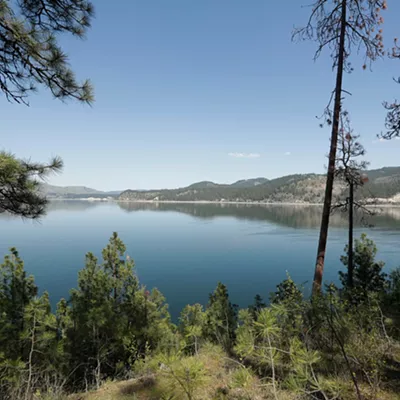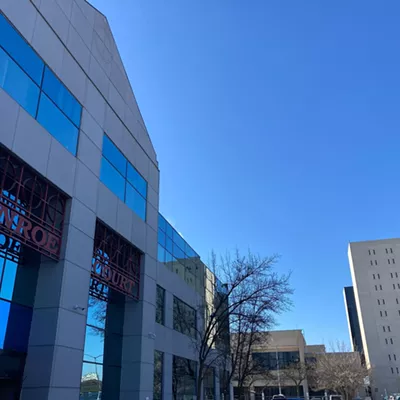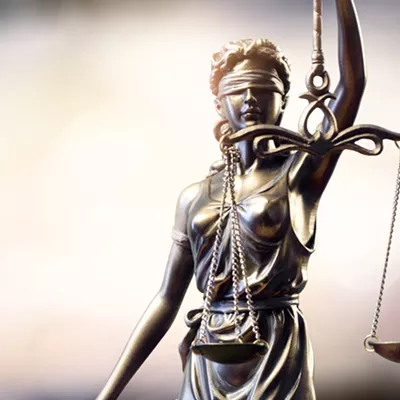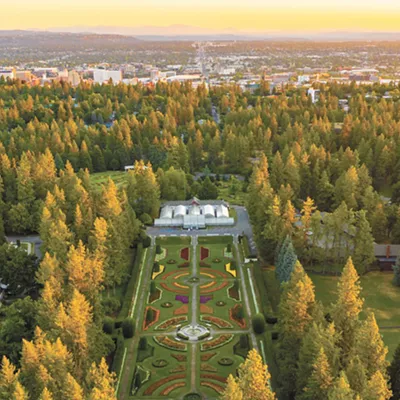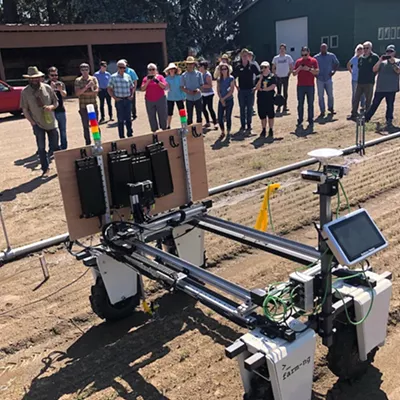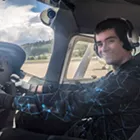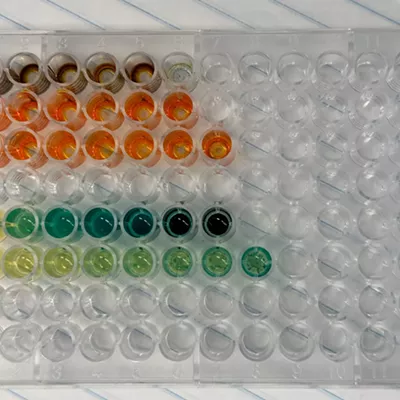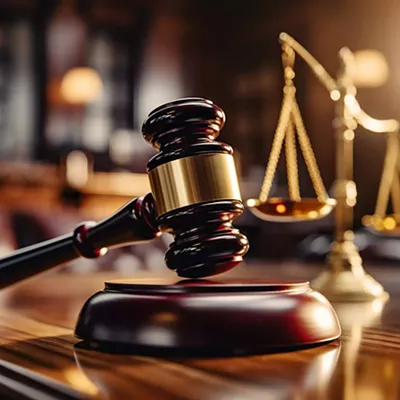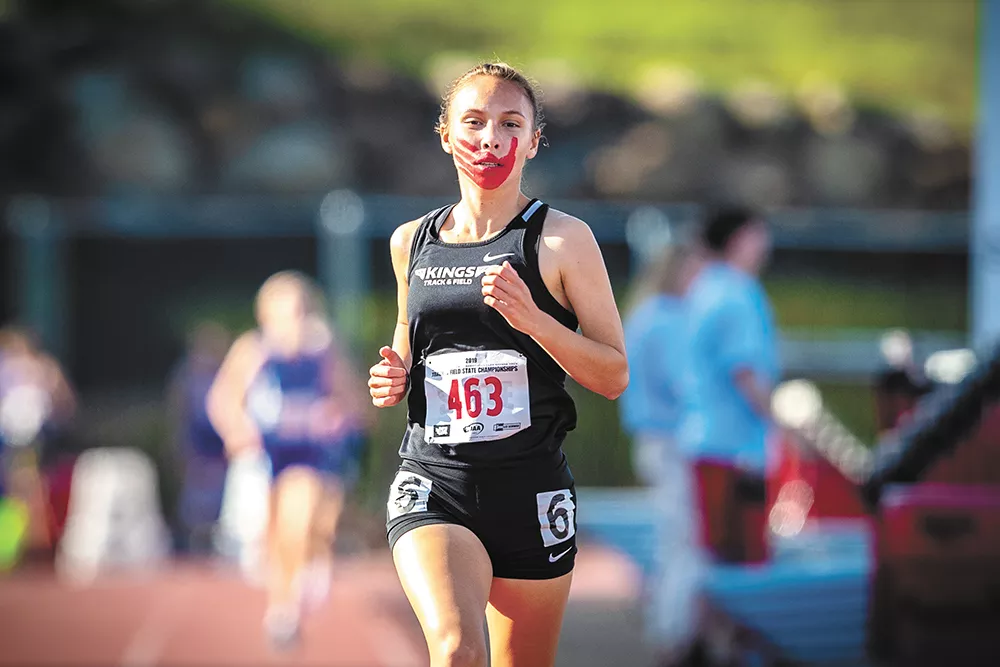
For 18-year-old Rosalie Fish, a member of the Cowlitz and Muckleshoot tribes, becoming a state track champion didn't come with the feeling of glory and excitement she'd once dreamed it might.
Instead, when the Muckleshoot Tribal School senior ran in the 1B state championships at Eastern Washington University in late May, winning the 800, 1,600 and 3,200-meter races, and coming in second in the 400, she carried the weight of the stories of four women she was running for.
With a red handprint painted across her face, and a red "MMIW" on her leg, standing for "missing and murdered indigenous women," Fish ran to bring awareness to the many Native American women who go missing and are murdered at disproportionate rates around the United States and Canada.
"I had a lot of people when I got done with my race asking me, 'How does it feel to be state champion?'" Fish recalls by phone this week, just a few days after graduating from high school. "I wasn't really happy with being a state champion as much as I was thinking all the while how insignificant my tiny race was compared to these issues and the things that my relatives are experiencing."
She ran to honor the mysterious or questionable deaths of Misty Anne Upham, Alice Looney and Jacqueline Salyers, all Native women in Washington who were killed between 2004 and 2016. She also ran for Renee Davis, a member of the Muckleshoot Indian Tribe who was pregnant when she was shot and killed by King County Sheriff's deputies conducting a welfare check in 2016.
"My 3,200 for Renee Davis was really, really emotional, just because her story was so close and so traumatic," Fish says. "It was eight laps to dedicate and just think about her and her experiences."
Fish says she was inspired by the activism of Jordan Marie Daniel, a Lakota woman who ran the Boston Marathon earlier this year, praying at each of the 26 miles for different missing and murdered indigenous women.
"There shouldn't just be people who go missing off the face of the Earth."
While taking a break from the take-home finals that she's working on this week as she also works toward an associate's degree from Green River College in Auburn, Fish says it's been a personal issue for her and her family.
"I was first made aware of the issue just by being a Native woman, a woman living on the Muckleshoot Reservation, it's just something you become aware of living in this community," Fish says.
It's also an issue that's making more headlines, especially as Washington and Canada both released reports this month detailing their investigations into missing and murdered Native women.
The Department of Justice reports that Native American women living on some reservations in the U.S. are murdered at rates more than 10 times the national average. Native American men and women living in urban areas are also impacted by violence at disproportionate rates, and in general there is a lack of comprehensive data on how many are missing or have been murdered.
In recent years, activists in the U.S. and Canada have called on their governments at the national, state and local levels to account for the missing and look into cases that have gone cold, particularly those involving women.
This month, Canada released its multiyear inquiry into the issue, calling the death and disappearance of indigenous women and girls in the country over decades a "Canadian genocide." It details "the truths of more than 2,380 family members, survivors of violence, experts and Knowledge Keepers shared over two years of cross-country public hearings and evidence gathering," according to a news release.
Meanwhile, Washington released the "Missing and Murdered Native American Women Report," to the Washington State Legislature on June 1.
Recognizing there was a lack of good data and that what does exist isn't always shared between agencies, lawmakers commissioned the report in 2018, asking the Washington State Patrol to quantify the issue and come back with recommendations.
The report states that as of May 2019, 56 Native American women from Washington were recorded as missing in the National Crime Information Center (NCIC), a database used by law enforcement agencies around the country.
While Native Americans make up 2 percent of the state population, American Indian/Alaska Native women made up 7 percent of the total 784 missing Washington women of all ethnicities, and American Indian/Alaska Native men made up 5 percent of the total 1,019 missing Washington men.
Despite clearly showing the numbers aren't proportional, some have already questioned the report's figures as too low. A separate report published in November 2018 by the Seattle-based Urban Indian Health Institute found 71 urban cases of missing or murdered indigenous women and girls in Washington state. That report focused solely on public information requested from three major cities — Seattle, Tacoma, and Spokane — and includes murder cases, on top of missing-persons cases.
But it's worth noting the recently released state report specifically focuses only on missing-persons cases.
Washington State Patrol Capt. Monica Alexander, who met with tribes and law enforcement agencies around the state over the last year before authoring the report, says she in no way is offended if people question the number reported as too low.
Because the report is only based on the number of missing-person reports officially entered in NCIC, some dating back to the 1970s, Alexander asks that anyone who thinks their relative or loved one isn't accounted for in the data make sure that there is an official police report on file for that person. To be entered into that law enforcement database or the National Missing and Unidentified Persons System (NamUs), which can be accessed by the public, a police report has to be filed, Alexander says.
"If my family member was missing and I went on a website representing those who went missing, I would want to see my family member's picture, and their name, to make sure people are looking for her or him," Alexander says. "Our focus is missing and murdered Native American women, but this will stretch to men as well. There shouldn't just be people who go missing off the face of the Earth."
The report notes many factors contribute to underreporting of missing-person cases and the less-than-ideal data.
In addition to trust issues with various levels of law enforcement and the government, sometimes Native American people have been misclassified in databases by ethnicity.
"Native Americans are often mistaken for Hispanic, Asian or Pacific Islander," the June report states, citing particular concerns voiced during an October 2018 meeting with the NATIVE Project in Spokane. "Also, 'N' was used for data collection purposes for Negro and Native. The concern is there is data out there that will never be correct."
Others who attended meetings with the State Patrol reported that law enforcement didn't take them seriously or told them they had to wait 24 to 72 hours before reporting someone missing, even though that's largely not the case.
Alexander says she sees the report simply as a starting point as state and tribal agencies continue to work together to better address reporting.
"While there are multiple databases, there currently is no centralized database that is all encompassing of the information necessary to effectively meet the needs of this growing problem," the report's conclusion states.
In the meantime, state lawmakers this year approved two liaison positions for the State Patrol. Both noncommissioned employees will be tasked with building relationships between the state government and Native communities, as well as developing best practices for law enforcement response to reports of missing indigenous people.
"[Someone] can say, 'Hey, I got turned away at this police agency,' and that liaison can work with them and be somewhat of an advocate," Alexander says. "Sometimes the law enforcement process can be intimidating, and we want to take that away. We're here to serve our public."
One liaison will be stationed in Western Washington, and the other will be in Eastern Washington.
In addition to emphasizing the need for better communication between law enforcement agencies at every level, Alexander again emphasizes that she wants to know if there are other missing people out there who need to be reported.
"I believe what people are telling me, that there are more people out there we don't have the names and information on," Alexander says. "I want to get that so I know the numbers we have are accurate." ♦




